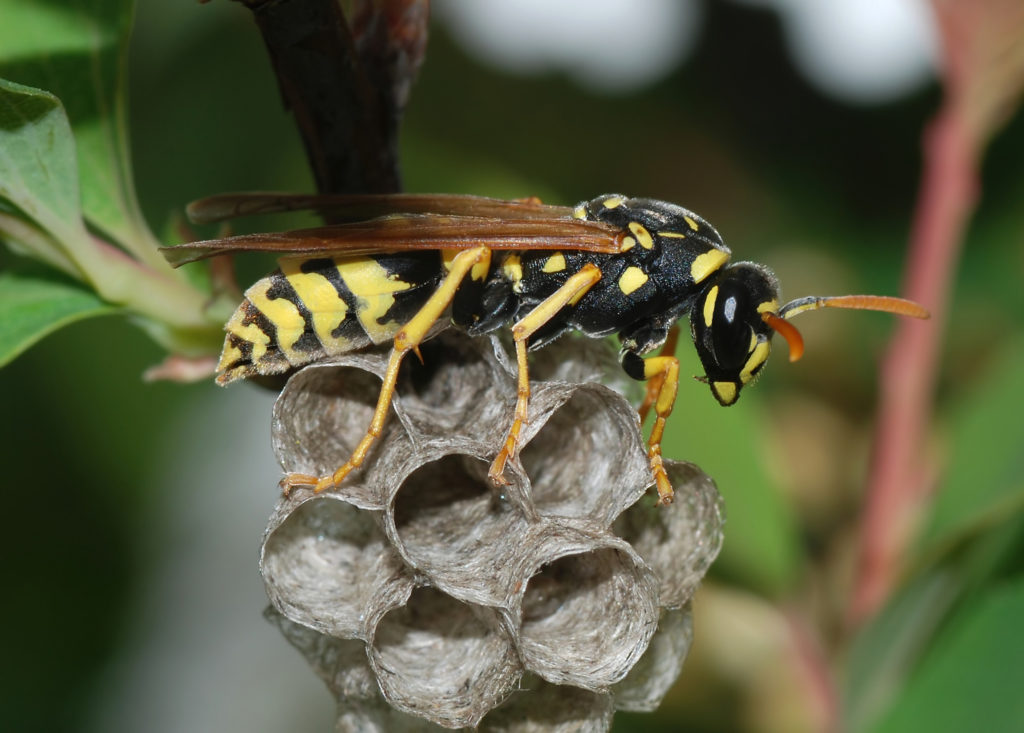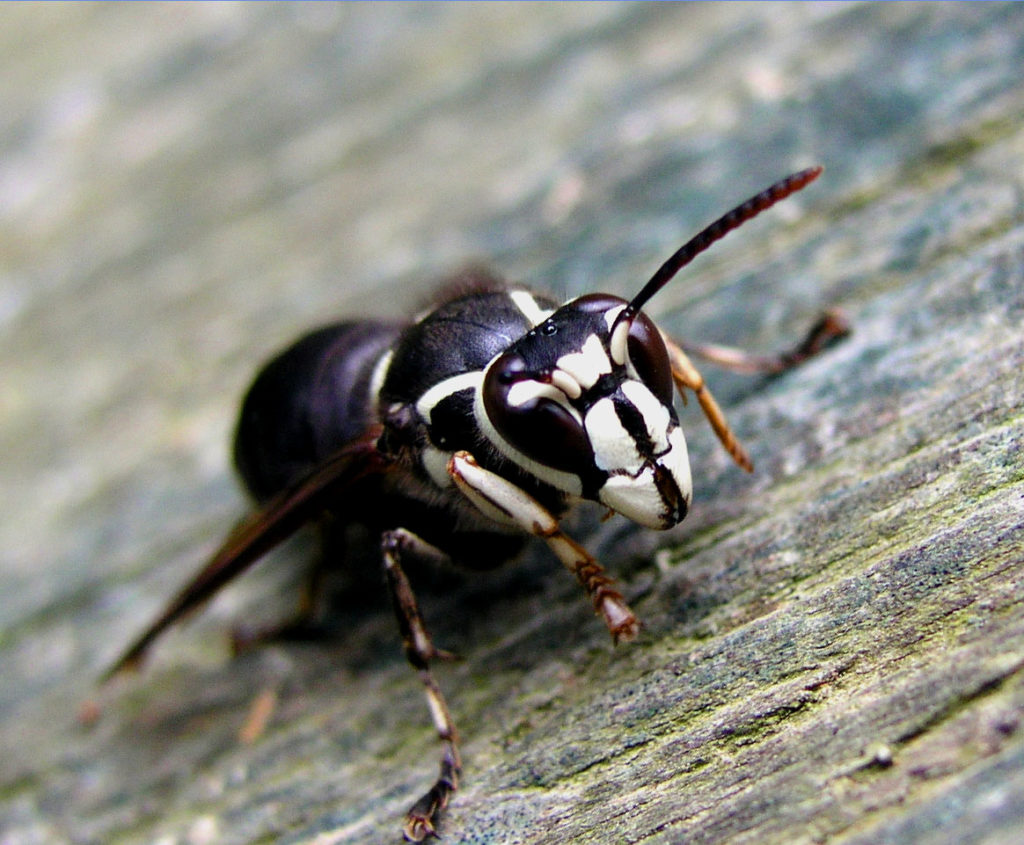Listed below are the 3 of the most common stinging insects we treat in Winston-Salem, North Carolina.
Paper wasp
The paper wasp have become one of the most important natural controls of many kinds of yard and garden insects. They do not produce nuisance problems around outdoor dining however they can sting if they feel threatened. The European paper wasp is a generally black insect marked with yellow. They are fairly slender-bodied insects with a distinct constriction of the body between the thorax and abdomen. Because of their coloring, they’re often mistaken for yellow jackets. The only recognizable physical distinction between the two is the body type (paper wasps are much thinner near the waist and is larger than Yellowjackets).

Yellow jacket
The Yellow Jacket is a North American social predatory insect that builds a large nest to house the colony. These bee-sized social wasps are black with yellow markings on the front of the head and yellow banding around the abdomen. The face is primarily yellow with dark eyes. Depending on the species, the queen will pick either an underground or aerial site to build her nest. Common places for a nest are attached to bushes, trees, or the eaves of homes. Yellowjacket nests are built with a recognizable paper-like material made from chewed cellulose. Yellow jacket are extremely territorial and will become very aggressive if you approach their nest. Symptoms of being stung include pain, swelling, warmth, redness at the site of the sting and itching. These symptoms arise soon after being stung and can last for several hours. Yellow jackets don’t usually leave stingers in your skin. Because of this, they can sting you multiple times, unlike bees.

Bald-faced hornet
Bald-faced hornets are the most aggressive common stinging insect we see in Winston-Salem (and the surrounding Triad area). The bald-faced hornet is distinguished from yellowjackets and paper wasps by its white and black coloring. They are large, about 7/8 of an inch long. They’re sometimes referred to as the white-faced hornet or black jacket. Bald-faced hornets are not true hornets, but rather a species in the yellowjacket family. They live in colonies similar to those of honey bees and ants. The colony is contained inside the nest constructed of paper-like material made from chewed wood fibers mixed with saliva. The peak worker population is 100 to 400 hornets by the end of the summer. In the fall, males and new queens are produced. Bald-faced hornet workers aggressively defend their nest by repeatedly stinging invaders.

Yellowjackets, wasps, and hornets may look alike and have similar characteristics, but they can be very different in their level of aggressiveness and their habits. It is important to properly identify the type of stinger in your home or garden before attempting any type of control.

